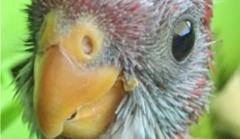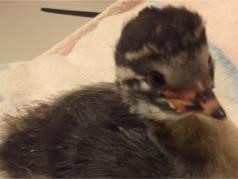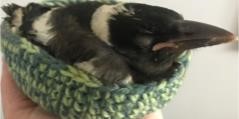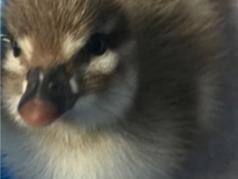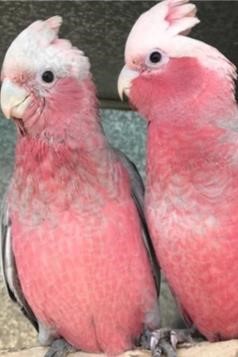Many ducks a waddlin'
New life for the new year. Lots of fluffy ducks!
New life for the new year. Lots of fluffy ducks!
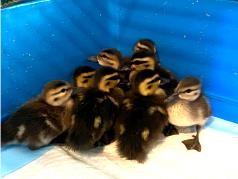
A pair of rosellas could not find a tree hollow, so they decided to try a roof cavity.
Unfortunately, their nestlings fell down into the wall cavity. Luckily the home owners were kind enough to put a hole in their wall to rescue the youngsters.
Our youngsters are now known as Wally and Cavannah. They arrived on 1 December and are growing fast. They coloured up quickly and grew feathers. Soon they will move to the aviary.
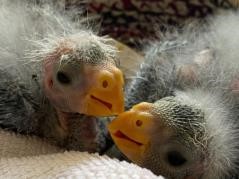
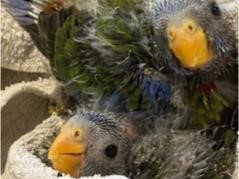
The recent storms have seen quite a few animals come in for rehab, especially young birds.
Hermin, a Magpie-lark, came into care looking quite under the weather. A member of the public found him on the ground suffering from exposure and gave us a call. Hermin is doing so well, he is now known as Big Hermin. He loves his food and the company of Little Hermin (on the right in image 2).
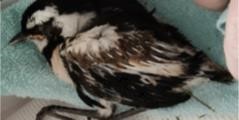
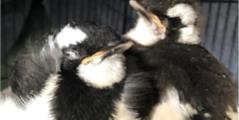
The Magpie-lark is colloqially known as Pee Wee because of its call. Pee Wees spend most of their time on the ground searching for insects & their larvae, as well as earthworms & freshwater invertebrates.
The Hermins should be ready for release once they have grown some more. It doesn't look like it will take too long!
The Hermins are now a trio, with Junior for company (on the left in the images below). As soon as Pip is big enough to perch they will be a quartet!
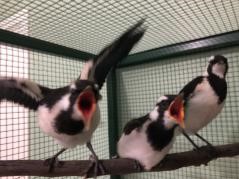
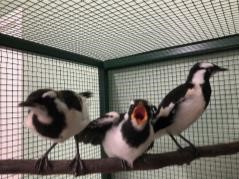
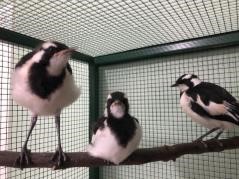
You may want to participate in the Aussie Backyard Bird Count.
Birds counted in Aussie backyards:
For those of you interested in more information, including the history of National Bird Week, you may want to head over to Birdlife Australia.
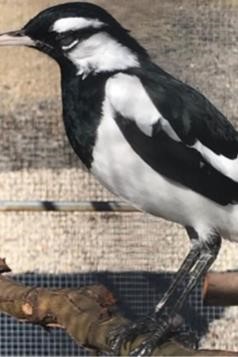
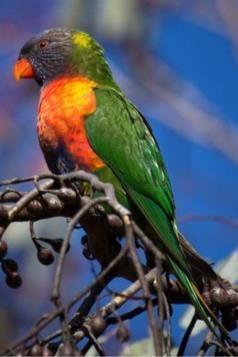
Spring has arrived and that means baby birds!
You will hear plenty of advice saying:
leave it where it is, the parents will look after it.Often this is not the right approach and can result in baby birds dying unnecessarily.
There are many things to consider when deciding whether to leave it where it is:
Even if the parents are feeding it, if the baby bird remains on the ground when the parents fly off to roost at night, it will likely be taken by a predator or get cold and become unwell.
Sometimes it is possible to place the baby bird on a branch, but often they end up back on the ground.
For these reasons we often bring a baby bird into care to keep it safe. Usually, within a few days, but sometimes weeks, we are able to reunite the baby bird with its parents.
If you come across a baby bird, before you make a decision to leave it where it is, please call our 24/7 Wildcare Helpline 6299 1966, anytime of day or night. One of our experienced bird rescuers will be available for advice and we are more than happy to visit to check on the baby bird.
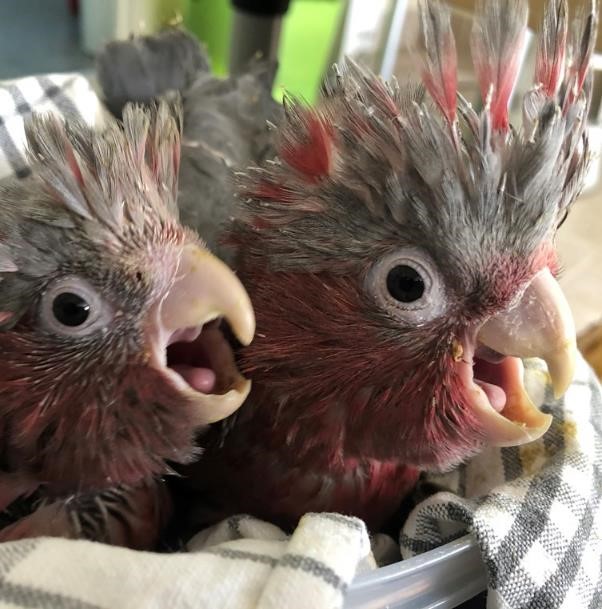
Wildcare gets busier every year. In 2020-21, we received 1,615 calls to the Wildcare helpline about birds. This compares with 1,150 in 2019-20 and 1,100 in 2018-19. This is quite an increase since 2005-06 when 85 birds came into care.
In 2020-21 approximately 1,290 of the calls resulted in birds being rescued.
The top three most common species were:
The top two reasons for birds coming into care were:
Unfortunately, 692 of the birds that came into care died or had to be euthanised. The majority of those euthanised had injuries that meant they could never be released or had diseases from which they would never recover (eg. Beak and Feather disease).
On a happier note:
We were able to reunite or rehome a number of escaped pet birds. This included a Rainbow Lorikeet, a Budgerigar, a Chicken, an Alexandrine Parrot, a Galah, a Muscovy Duck, a Zebra Finch and a couple of Pigeons.
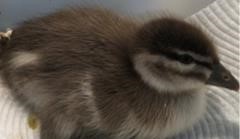
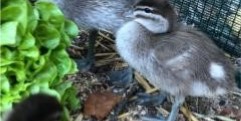
In 2020-21, the 1,615 calls to the Wildcare helpline about birds comprised 80 species.
| Name | # | Name | # |
|---|---|---|---|
| Australasian Darter | 1 | Nankeen Kestrel | 4 |
| Australasian Grebe | 3 | Noisy Friarbird | 4 |
| Australasian Shoveler | 1 | Noisy Miner | 12 |
| Australian King-parrot | 12 | Pacific Black Duck | 18 |
| Australian Magpie | 266 | Peregrine Falcon | 2 |
| Australian Owlet-nightjar | 1 | Pied Cormorant | 1 |
| Australian Raven | 17 | Pied Currawong | 32 |
| Australian White Ibis | 4 | Purple Swamphen | 2 |
| Australian Wood Duck | 114 | Rainbow Lorikeet | 12 |
| Black Swan | 30 | Red Wattlebird | 35 |
| Black-faced Cuckoo-shrike | 5 | Red-rumped Parrot | 16 |
| Brown falcon | 1 | Rock Dove | 18 |
| Brown Goshawk | 1 | Rufous Whistler | 1 |
| Brown Quail | 2 | Sacred Kingfisher | 10 |
| Budgerigar | 1 | Satin Bowerbird | 2 |
| Buff-banded Rail | 1 | Scarlet Robin | 1 |
| Bush Stone-curlew | 1 | Silver Gull | 1 |
| Collared Sparrowhawk | 2 | Silvereye | 10 |
| Common Bronzewing | 1 | Southern Boobook | 10 |
| Common Myna | 14 | Spotted Pardalote | 1 |
| Common Starling | 29 | Spotted Quail-thrush | 1 |
| Crested pigeon | 59 | Spotted Turtle-dove | 3 |
| Crimson Rosella | 118 | Straw-necked Ibis | 1 |
| Eastern Barn Owl | 1 | Striated Thornbill | 1 |
| Eastern Koel | 9 | Stubble Quail | 1 |
| Eastern Rosella | 40 | Sulphur-crested Cockatoo | 173 |
| Eastern Spinebill | 9 | Superb Fairy-wren | 6 |
| Eurasian Blackbird | 15 | Superb Parrot | 1 |
| Eurasian Coot | 3 | Tawny Frogmouth | 30 |
| Galah | 219 | Wedge-tailed Eagle | 8 |
| Gang-Gang Cockatoo | 4 | Welcome Swallow | 7 |
| Grey Fantail | 1 | Whistling Kite | 1 |
| Grey Shrike-thrush | 5 | White-browed Scrubwren | 1 |
| Horsfield's Bronze-Cuckoo | 1 | White-faced Heron | 1 |
| House Sparrow | 19 | White-headed Pigeon | 1 |
| Laughing Kookaburra | 43 | White-plumed Honeyeater | 1 |
| Little Corella | 15 | White-winged Chough | 5 |
| Magpie-lark | 35 | Willie Wagtail | 3 |
| Masked lapwing | 26 | Yellow Thornbill | 1 |
| Muscovy Duck | 1 | Yellow-faced honeyeater | 4 |
| Zebra Finch | 1 |
Wildcare statistics, along with statistics from other wildlife organisations, are published in the NSW Wildlife Rehabilitation annual reports. The latest report is a compilation of rescue data from the 2019-20 year of fire, drought and flood: NSW Wildlife Rehabilitation, 2019–20 Annual Report.
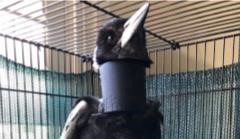
Stretch: Neck brace to prevent removal of pin in broken wing.
